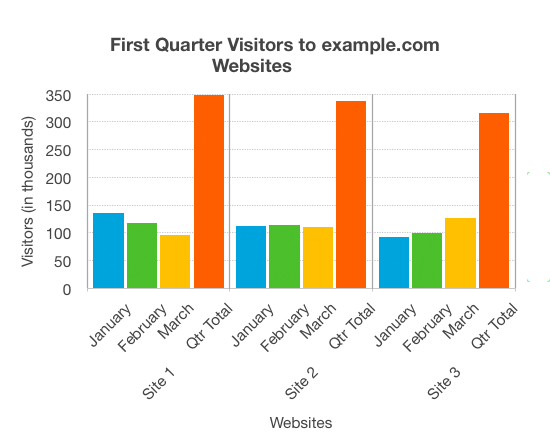Ensure there is a text description for all images as Alt text is used to describe what the image communicates or what the image does.
Complex Images
Complex images contain substantial information – more than can be conveyed in a short phrase or sentence. These are typically:
- graphs and charts, including flow charts and organizational charts;
- diagrams and illustrations where the page text relies on the user being able to understand the image;
- maps showing locations or other information such as weather systems.
In these cases, a two-part text alternative is required. The first part is the short description to identify the image and, where appropriate, indicate the location of the long description. The second part is the long description – a textual representation of the essential information conveyed by the image.
In most instances the second part is already present within the publication, as you will often find that data-driven complex images are used to backup what has been written.
Examples
In this example, a bar chart of website visitor statistics has the short description “Bar chart showing monthly and total visitors for the first quarter for sites 1 to 3. Described under the heading Site visitors full text.”, provided through the alt attribute of the image. The long description provides detailed information, including scales, values, relationships and trends that are represented visually. We describe the location of long description via the alt text.

Alt text: Bar chart showing monthly and total visitors for the first quarter for sites 1 to 3. Described under the heading Site visitors full text.
Site Visitors
The chart shows the website hits for the first quarter of 2014. It shows that Site 1 has more visitors than either of the other sites, but the number of visitors is decreasing. Site 2 has a fairly constant number of visitors, while for Site 3 page hits are increasing month on month.
 Publication Hub
Publication Hub